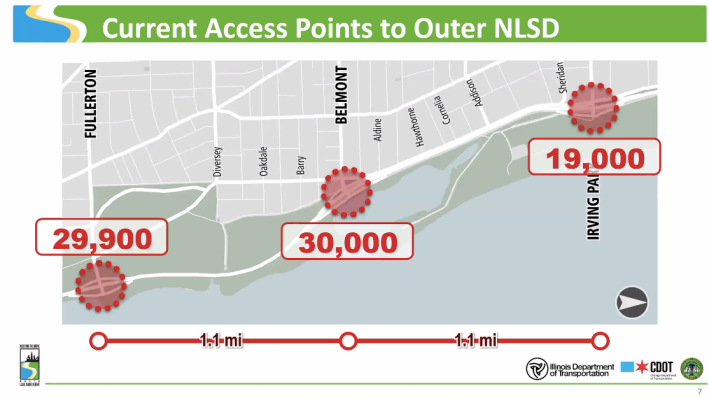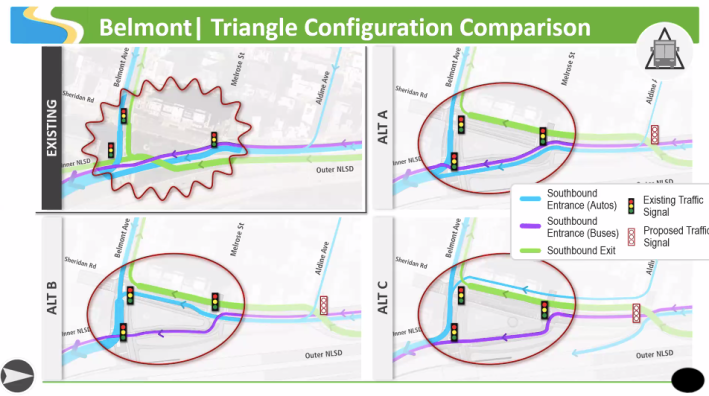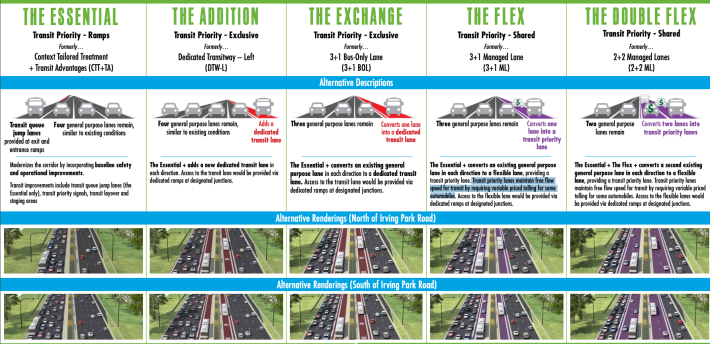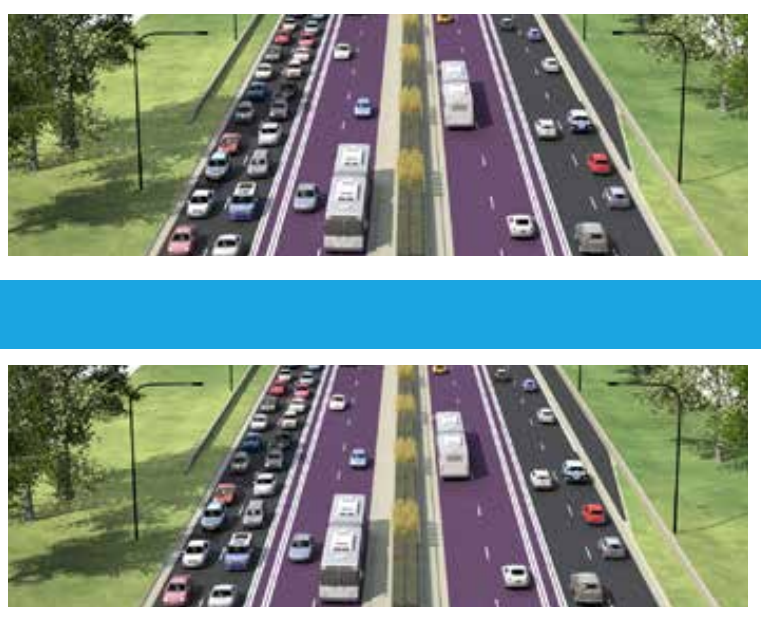Update 7/2/21, 11:45 AM: Today a local transit advocate very politely asked me to highlight the fact that some advocates such as Better Streets Chicago (of which Streetsblog Chicago co-editor Courtney Cobbs is a cofounder) have been pushing for significantly shrinking the footprint of DuSable Drive, a campaign SBC covered last October. Former Tribune transportation writer recently made a similar proposal in a Trib op-ed. Wisniewski and I also discussed this topic on WBEZ last week. -John Greenfield, co-editor
For several years now, the Illinois Department of Transportation and the Chicago Department of Transportation have been leading the Redefine the Drive community input process for the planned reconstruction of Lake Shore Drive between Grand and Hollywood avenues. (The highway was renamed Jean Baptiste Point du Sable Lake Shore Drive for Chicago's Black founder last Friday, so we'll henceforth refer to it as DuSable Drive for short.)
On Tuesday of last week there was a virtual community meeting to discuss proposed designs for the Lakeview portion of the drive between Addison Street and Belmont Avenue. The event drew a large crowd of 200 virtual attendees.
The meeting included an hour-long presentation, followed by an hour of Q & A. Presenters included Nathan Roseberry, CDOT assistant chief highway engineer; Ald. Tom Tunney (44th); Ald. James Cappleman (46th); Kimberly Murphy, consultant to IDOT, based in Schaumburg; and Michael Folkening, IDOT director of urban design and traffic.
Tunney opened the meeting, stating that changes to the plan for this part of the project were influenced by feedback from residents. He acknowledged that "the Belmont intersection [with DuSable Drive] has been an unsafe intersection for many years." There's heavy traffic here from car and bus drivers entering and leaving the highway.

Cappleman noted that there are many points of view on what the new DuSable Drive should look like. "When you have ten Chicagoans, you will have 11 strong opinions." He added that this is the time to dream big, noting that we should plan for the transportation system of the future, which will hopefully be less car-centric. "Children born today may [grow up to] not know what a steering wheel is."
The presentation reviewed the feedback the planners had received from neighbors at an earlier Lakeview meeting. Unfortunately, much of the discussion revolves around solving the Belmont traffic bottleneck, rather than focusing on the needs of people walking and riding bikes.

The planners are currently considering five corridor-wide alternatives. "The Essential" would merely involve minimal improvements to bus service, such as queue jumps and transit-priority traffic signals.
"The Addition" would add two more lanes to the eight-lane highway to make room for bus-only lanes without converting any of the current mixed-traffic lanes. That's a scenario no one really wants, because it would potentially consume parkland and make the highway an even wider barrier between residents and the lakefront.
"The Exchange" is the scenario sustainable transportation advocates are pushing for, converting two of the mixed traffic lanes so that dedicated bus lanes could be added without expanding the road."
"The Flex" would convert two of the current lanes to so-called "managed" lanes that would be available for buses, as well as private vehicle drivers who pay a toll. The planners claim these lanes would "maintain free flow speed for transit by requiring variable priced tolling for some automobiles," that is, the tolls would get more expensive as more drivers enter the lanes. The problem with that strategy is that either the tolls will be low enough that these shared lanes would fill up with private vehicles, or else the tolls could be so exorbitant (one highway where congestion pricing was tried in Virginia had $40 tolls) that they'll raise equity issues and create political pushback.
The "Double Flex" scenario would include two of the managed lanes in each direction. If the planners are going to go the managed-lane route, it probably couldn't hurt to double the number of them to provide more room for buses.

The project team added that it is "reviewing the potential to toll general purpose lanes for all five remaining alternatives as part of a project funding plan. The plan will review tolling, alongside other alternatives for project funding and will present recommendations to the public with the next round of public engagement."
As the slides were being presented, the Zoom chat box began loading with comments, mostly from people who were unhappy that the designs did little or nothing to take cyclists and pedestrians into consideration.
An attendee noted, "Cities across the world used the [drop in traffic during] the COVID-19 pandemic [as an opportunity to make] massive changes to the public realm to the benefit of pedestrians by... shifting the focus away from cars." They wondered why Chicago isn't one of them.
Another attendee stated, "Why aren't these designs bus + pedestrian-centered. Why are Chicago's concerns always driver-first?"
Working with feedback received at previous meetings, 20 initial designs were put forward then narrowed down to five corridor designs. 3,200 residents responded to a survey on the project.
All residents interested in adding their voice to the project can reach out directly by sending their comments to info@northlakeshoredrive.org.
Watch the community meeting here.
Follow Imelda March on Twitter at @hcram1.





